| "Wide Space Signature (mei)" |
H 07074.0 |
|
Never seen. "square ear" with "little volume", "cucumber" with mushroom relief. Amida file grain with morning glory on the front and dead pine leaved and chrysanthemums embossed on the back-side. No. 5 HANARE-MEI. Tsuba with this style of mei has often the embossed chrysanthemums. (Akiyama)
NAKAMURA KAKUDAYU NOBUIYE TANSHU by Akiyama Kyusaku 1926, page 84. |
 |
|
Unseen. "unspaded round ear". Relief of "snow-rinr". They are not clearly marked but there are Amida "file" grains and "hair-lined" dead pine leaves and waves. MEI not clear. (Akiyama)
NAKAMURA KAKUDAYU NOBUIYE TANSHU by Akiyama Kyusaku 1926, page 130. |
 |
TOKEN KINKO MEI SAKU SHU Eight volumes: 1935 to 1938. Sewn softbound, 7 ½ x 12”, about 100 pages per volume in Japanese. This may be the scarcest, most difficult to find book on kodogu. Hundreds of great fittings, both soft metal and iron, are illustrated. There is very little text; the books are mostly pictures.
NOBUIYE This volume of eight, has two examples of the 'wide-spaced' NOBUIYE signature. (See at right)
 |
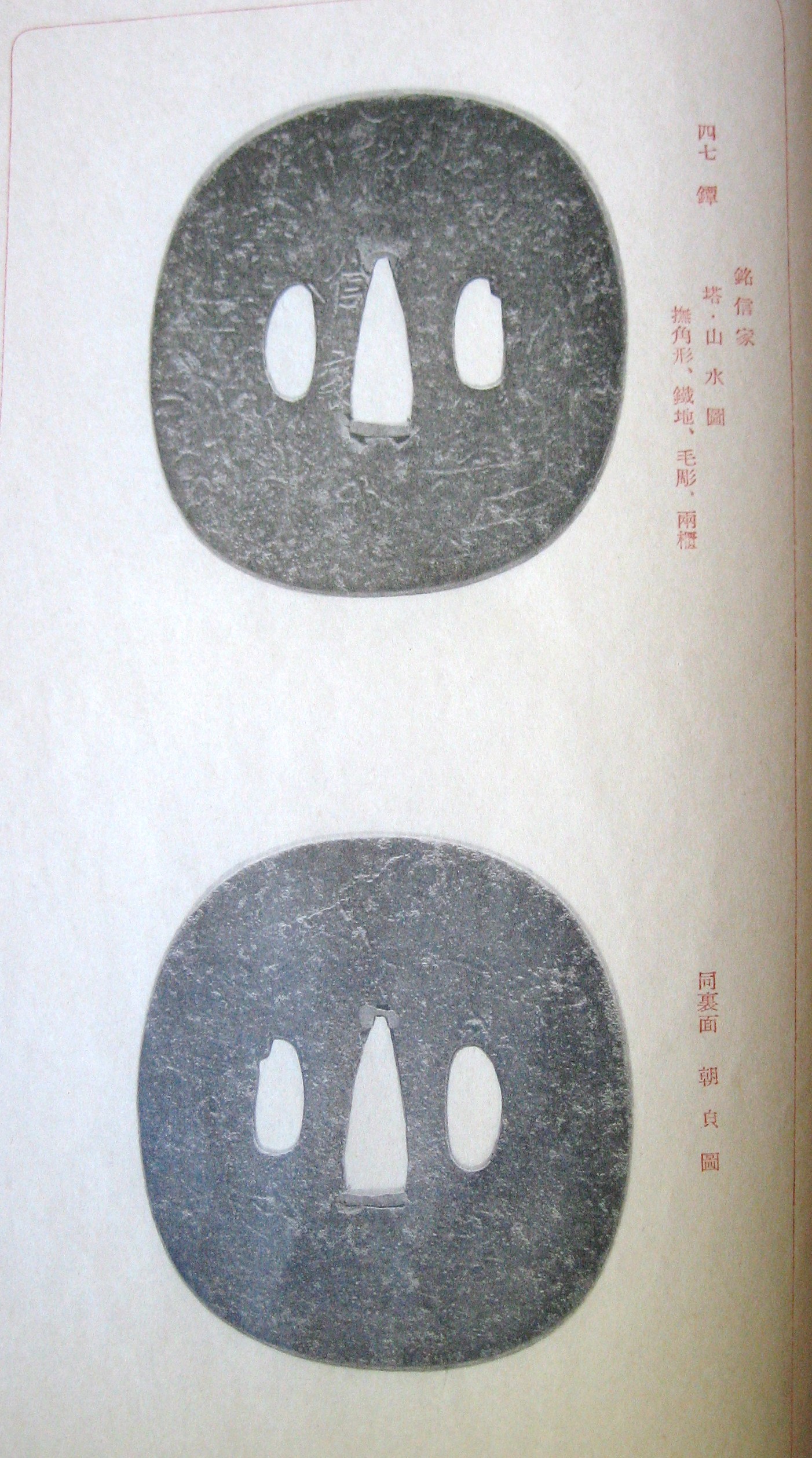
 
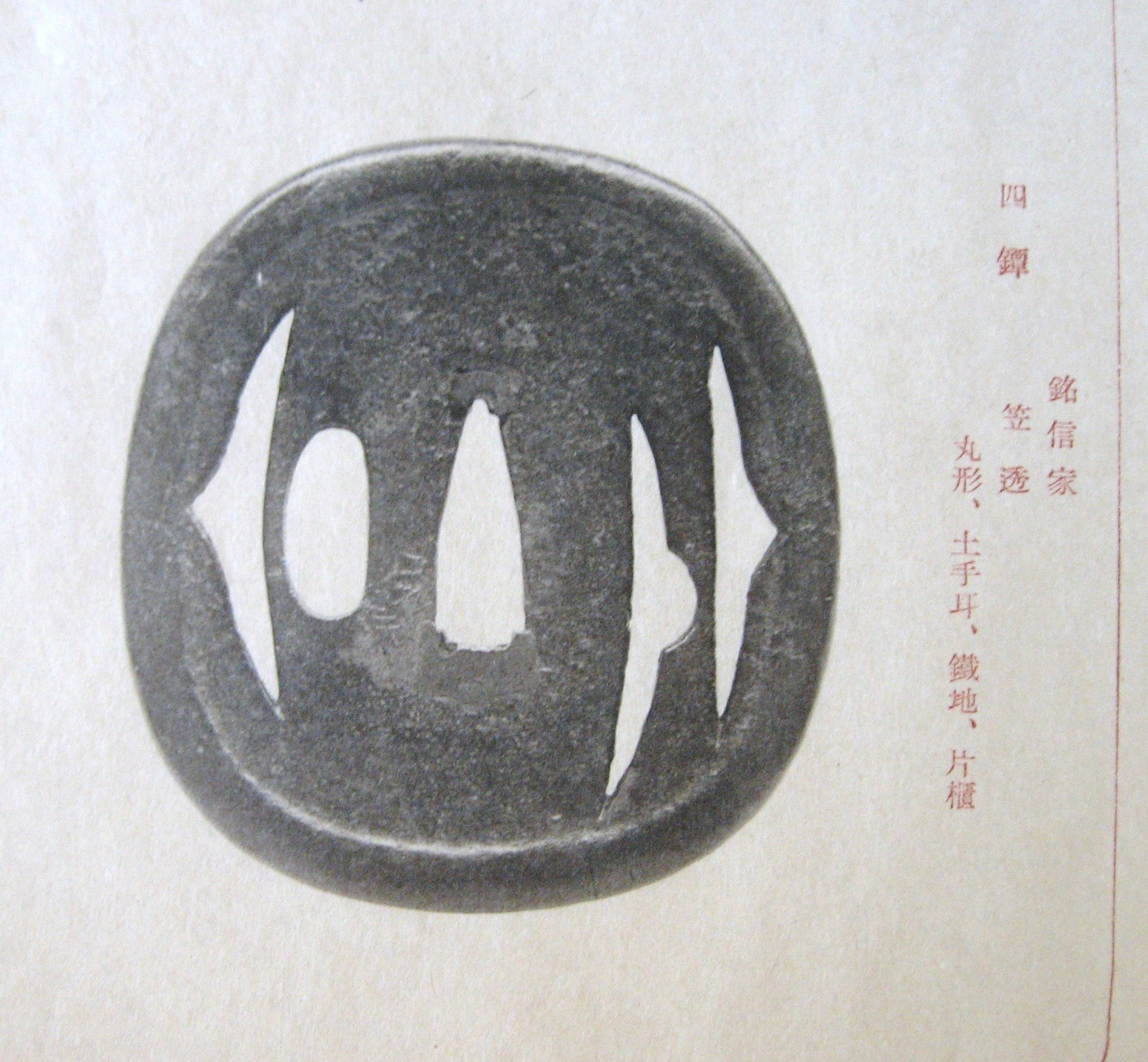 |
427 TSUBA: well forged iron, slightly engraved with pine-needles. Openings for kozuka and umabari (needle to bleed horses) cut later. Signed: NOBUIYE ( I, 1485-1564 the famous 17th master). Illustrated (In kagami-su of nashiji decorated with tessen shrubs, flowers inlaid with gold. Tokugawa, about 1600.)
This piece was purchased from "AMIYA" (Mr. Ogura).
JAPANISCHE KUNSTWERKE DER SAMMLUNG MOSLE, plates published 1914, pl. XXXVIII #427, and in the English text, vol. 1, page 167. |
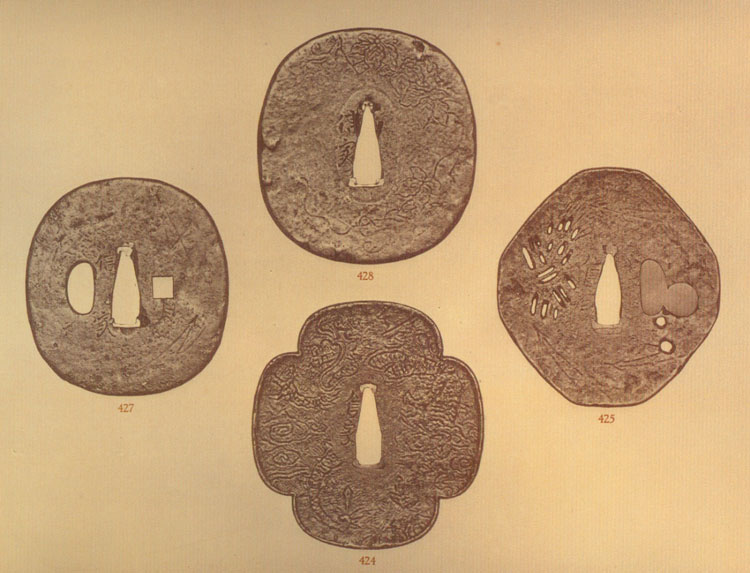 |
THE MOSLE NOBUIYE SUPPLEMENTARY:
This tsuba is well known and since its inclusion in the Jack Paras sale, new information has come to light. At that time this was the only recorded example with the Nobu iye so widely spaced. Now another example has come to light which has to be by the same artist and yet another has been published and photographed in the London Sothby's auction catalogue of June 2, 1981, lot number 125, page 35. This would tend to prove that this is not a forgery of the great Nobuiye or even the work of Fujiwara Nobuiye, but rather an unrecorded artist of the Momoyama period who was directly related to the great masters. Ca. 1575. Ht. 7.1cm., Th. 0.4cm.
|
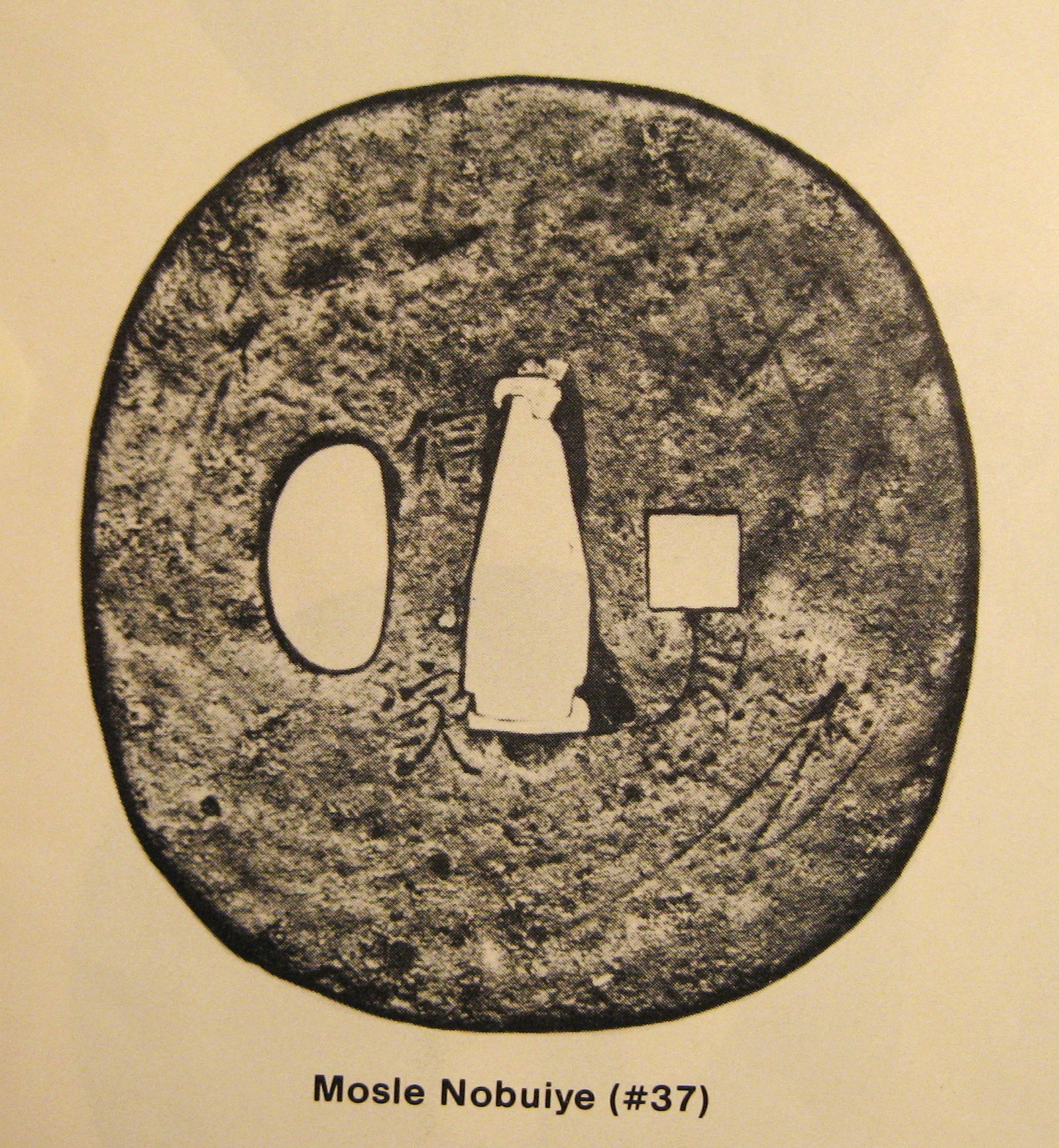 |
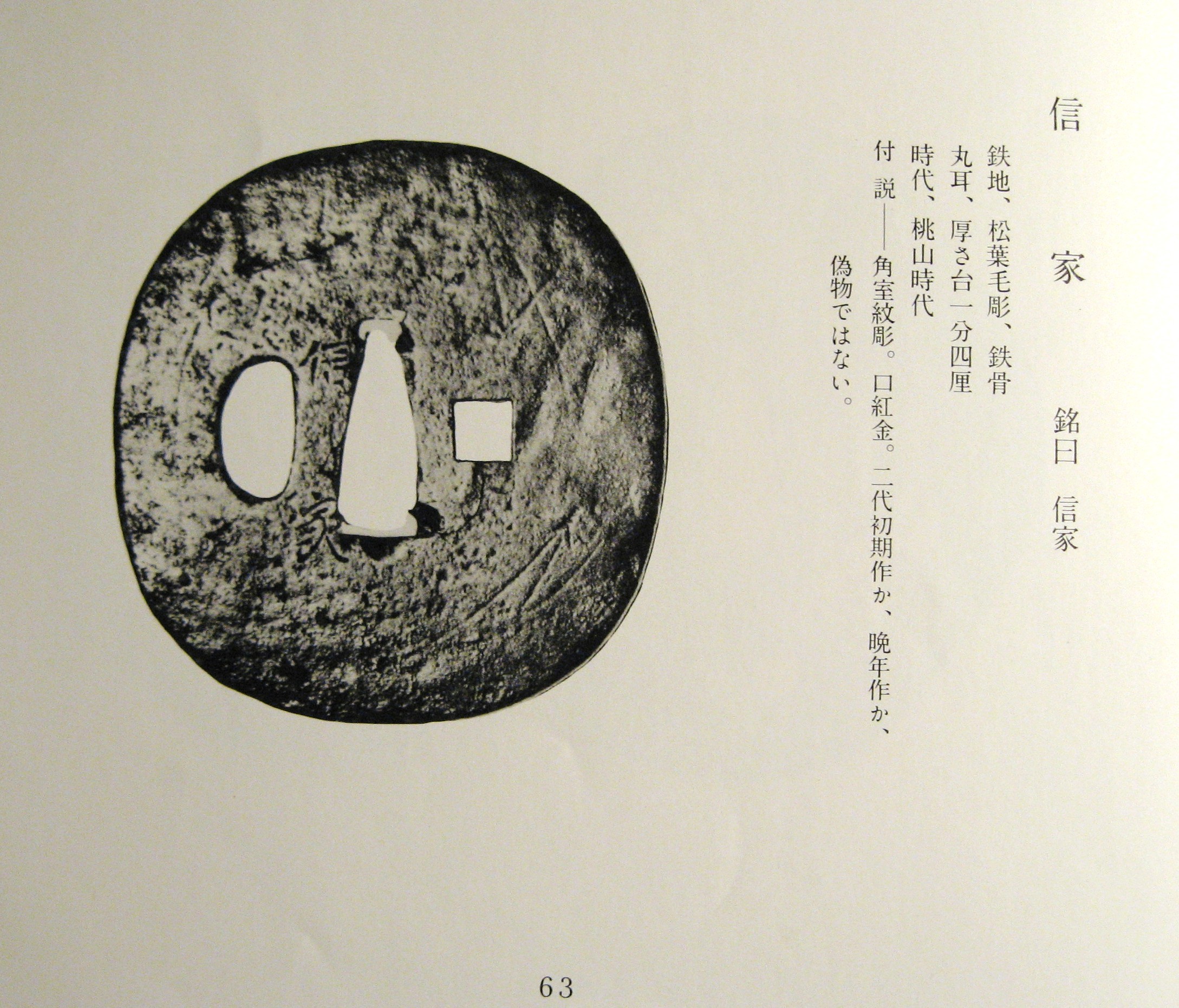
Translation of page 63, 'Tsuba Kanshoki' 1965: right to left, top to bottom
Col.1 NOBU IYE, mei says 'Nobuiye'
Col.2 tetsu ji, hand carved pine needles, iron bones (tekkotsu)
Col.3 maru mimi, measurement (thickness)
Col.4 Jidai, Momoyama Jidai
Col.5 Edge Shape, maru mimi, square opening, second generation, made in last period of his life
Col.6 'This is not a fake or forgery'
|

|
|
Another example has come to light which has to be by the same artist as these two. It is published and photographed in the London Sotheby's auction catalogue of June 2, 1981, lot number 125, page 35. |
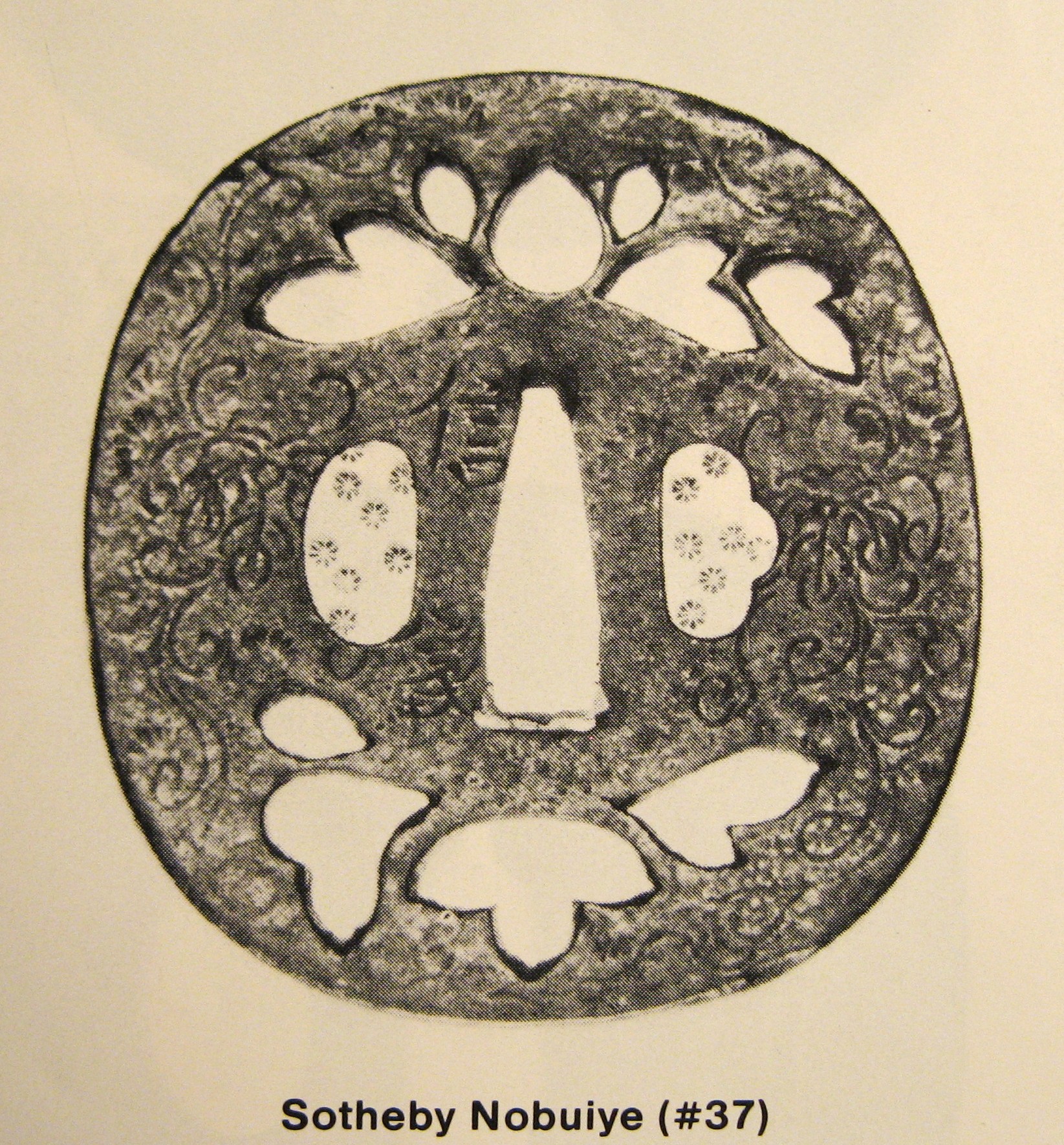 |
|
THE SECOND KNOWN EXAMPLE OF THE WIDE SPACED NOBUIYE SIGNATURE. This is the Paras Nobuiye and was sold in his auction. The dragon on the face is very well carved and the style is that of the second Nobuiye. The reverse of the plate also has a dragon (female) but not as large as that on the face. The plate is very hard and very well forged with strong iron bones and hammer work in the mimi and the edge of the plate. The signature is the two kanji name Nobuiye on the left of the front side seppadai. |
 |
|
NIHON TOBAN ZUSETSU by Takezawa Masao, 1968, page 97.
Iron, amida-yasuri, with hairline carving, hare and paulownia scrolls.
 |
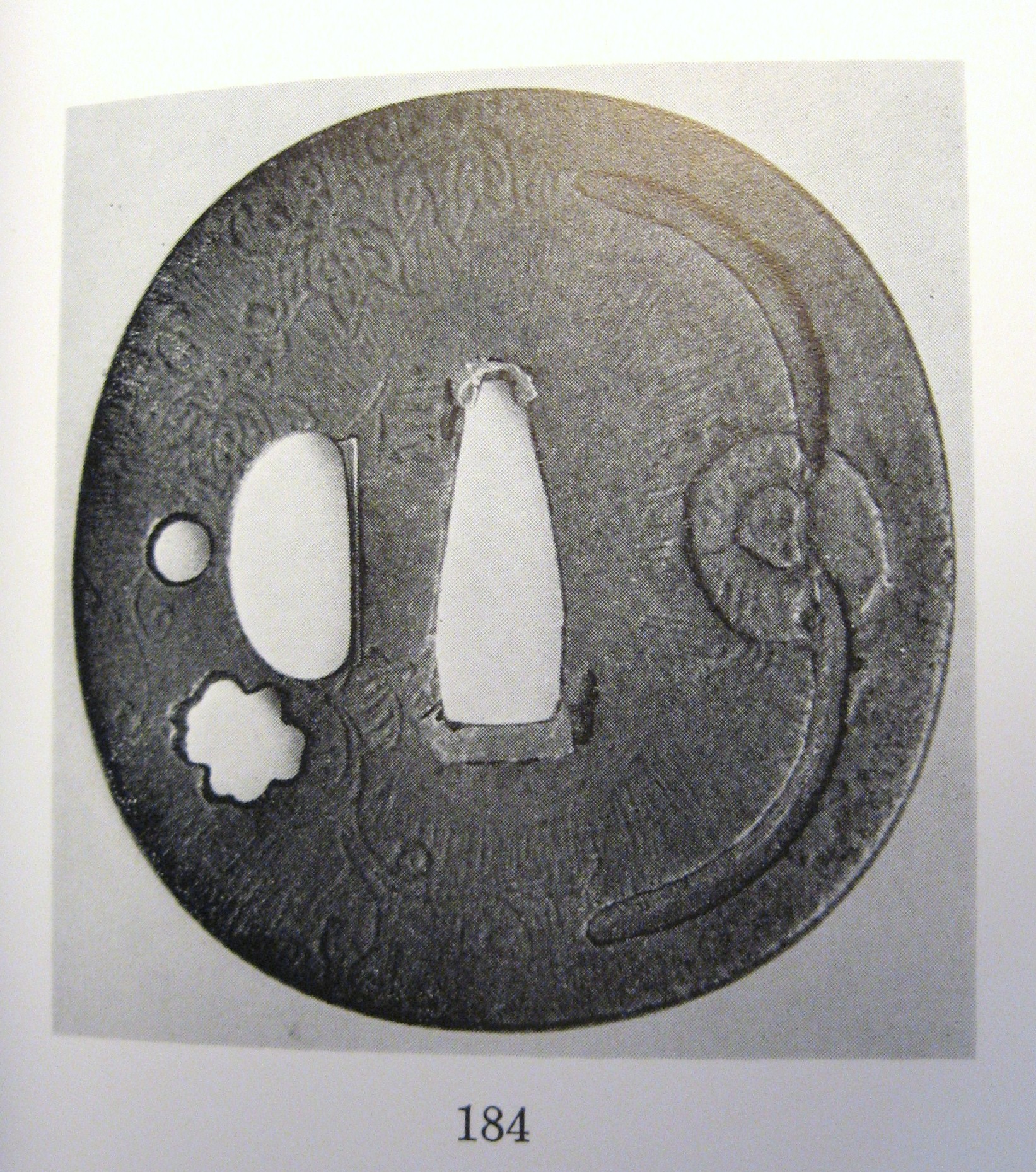 |
|
GAI SO SHI Study Collection of Japanese Sword Fittings by Robert E. Haynes, page 53.
"Iron mokko shape plate with slightly raised rim and the surface carved and worked in the classic style of Nobuiye school. Signed: 'NOBUIYE' H 07074.0 (wide space signature). This example is superior to many of the others in both the quality of the work and the attention to the detail carving which is very close to that of the "famous" Nobuiye. In this example the style of the signature is not a copy of any known example, and shows the independant hand of an artist that we have no knowledge of. athe "experts" of today dismiss such tsuba as this, but they do not know why. Since they do not understand them they cannot see their full relationship to those that are known in various books and collections. It is still very important to fully study the many various masters of the Nobuiye group school and not think in the narrow idea that there were only "two" great masters."(Haynes) |
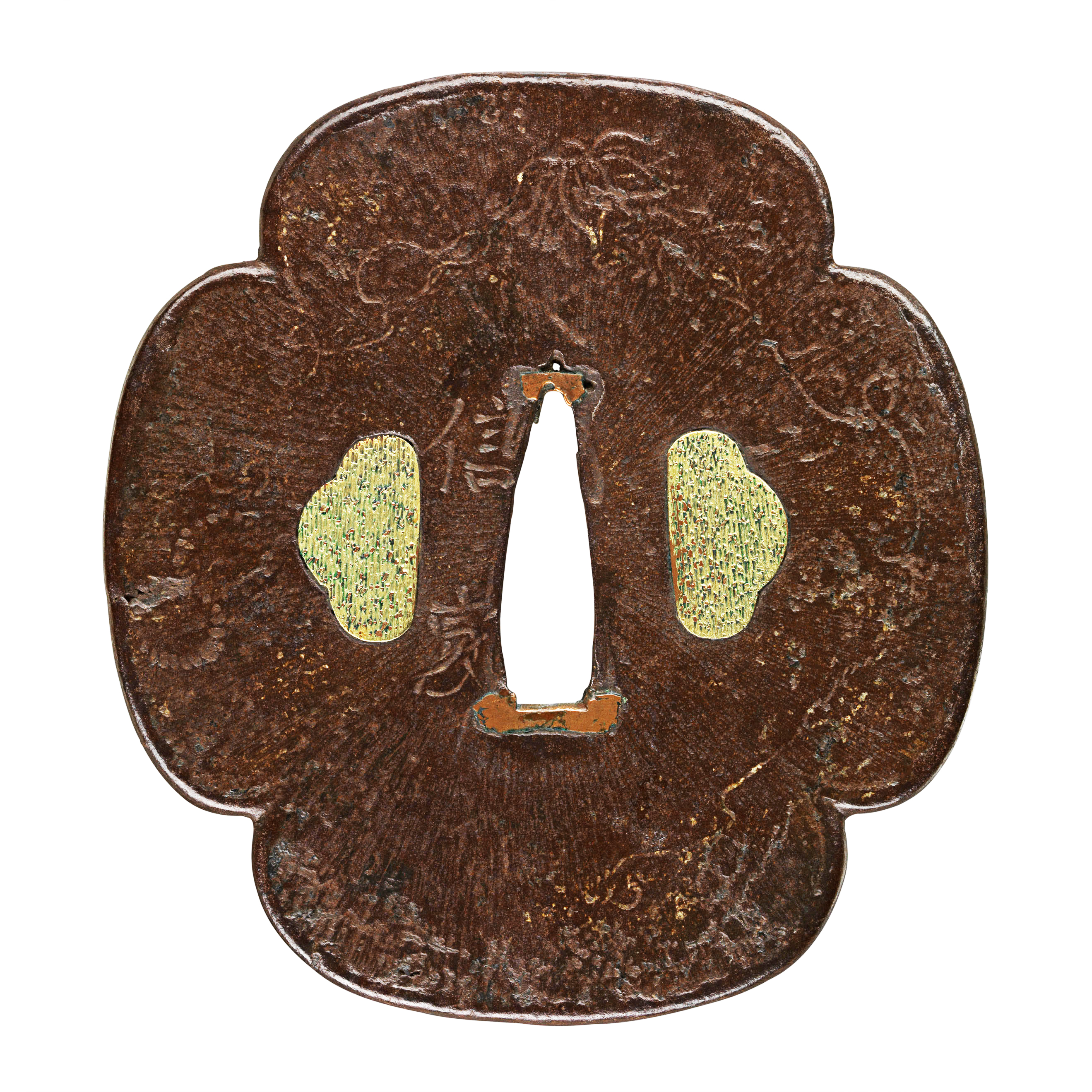 |
|
"Mei: Nobuiye H 07074.0 (ca 1600-1650). Known as "wide spaced signature" (kanji are carved at the top and bottom of seppa-dai area), this important tsuba is additional to those already known. This example is superior to many of the others in both quality of the work and the attention to the detail carving. In this example the style of signature is not a copy of any known example, and shows the independent hand of the artist. It is important to fully study the many various masters of the Nobuiye group and not beleive in the idea that there were only "two" great masters. The true examples will be found in the quality of the iron, its forging, and the shapes, designs and pure beauty of the metal as seen here." (Long)
The E.D. LONG COLLECTION |
 |
|
"Large oval mokko iron plate tsuba with raised rim, the edge and the plate carved with the classic tortoise shell pattern found on many Nobuiye tsuba. The plate surface well worked and showing the forging patterns that are famous in Nobuiye tsuba. The hitsu-ana are in the form of the Matsukawabishi mon, half forming each side. All these elements are repeated on the reverse side. The face is signed: 'NOBUIYE', see H 07074.0. This is a new, unrecorded example of what I have called the "wide spaced" Nobuiye signature." (Haynes)
The E.D. LONG COLLECTION |
 |
|
Iron sukashi tsuba signed NOBUIYE. A very thick and heavy tsuba with a plate of yaikite shitate (a look of molten iron). A wonderful patina of dark brown. |
 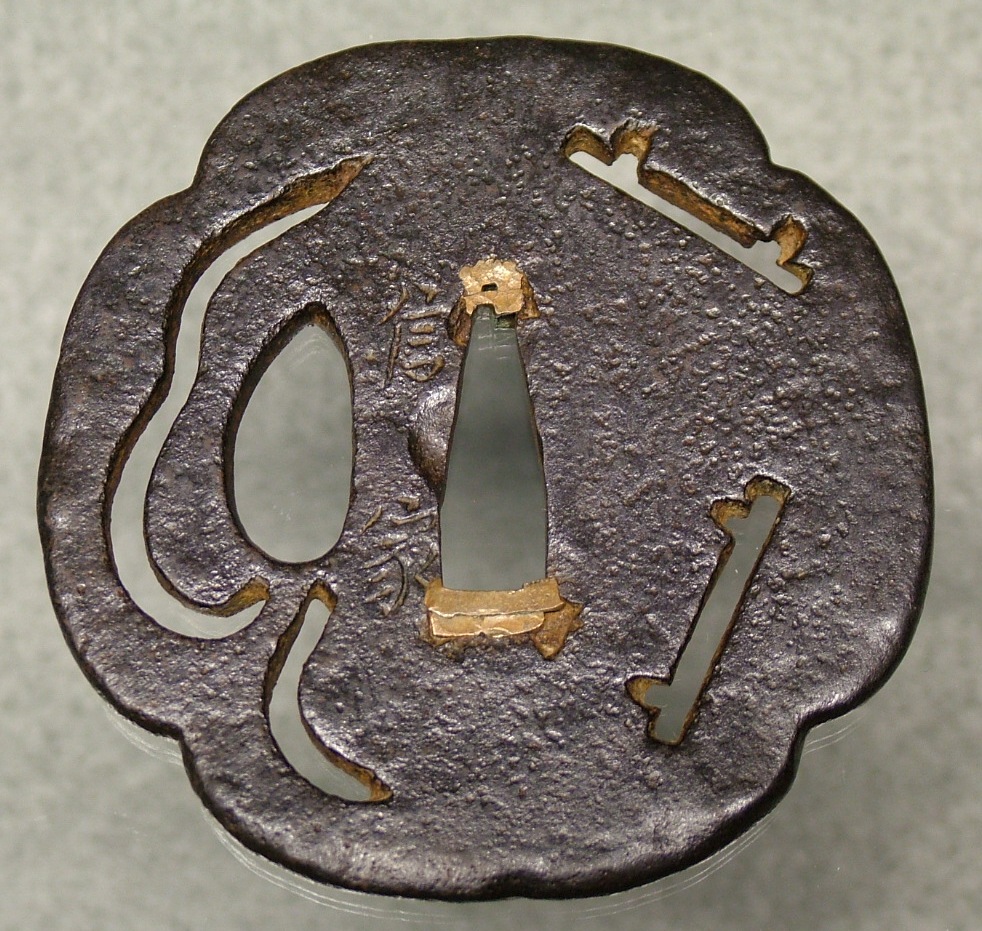 |
|
|
 |
|
|
 |
|
|
 |

|
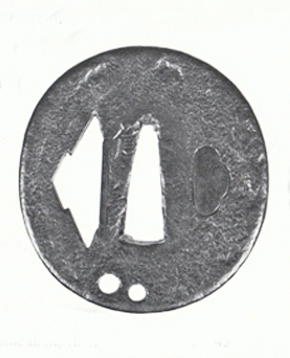 |
|
|
 |
|
|
 |

